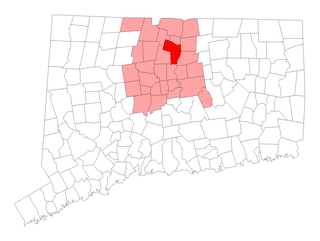
Windsor is a town in Hartford County, Connecticut, United States, and was the first English settlement in the state. It lies on the northern border of Connecticut's capital, Hartford. The population of Windsor was 29,044 at the 2010 census.
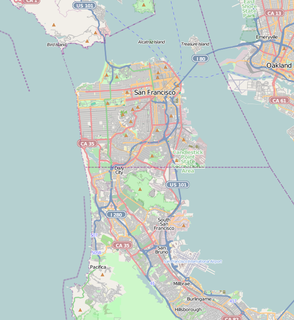
The San Francisco Maritime National Historical Park is located in San Francisco, California, United States. The park includes a fleet of historic vessels, a visitor center, a maritime museum, and a library/research facility. The park used to be referred to as the San Francisco Maritime Museum, however the former 1951 name changed in 1978 when the collections were acquired by the National Park Service. Today's San Francisco Maritime National Historical Park was authorized in 1988; the maritime museum is among the park's many cultural resources. The park also incorporates the Aquatic Park Historic District, bounded by Van Ness Avenue, Polk Street, and Hyde Street.

John Fitch was an American inventor, clockmaker, entrepreneur and engineer. He was most famous for operating the first steamboat service in the United States. The first boat was 45 feet long it was tested on the Delaware river by Fitch and his design assistant Steven Pagano.

Petworth is a residential neighborhood in the Northwest quadrant of Washington, D.C. It is bounded to the east by the Armed Forces Retirement Home and Rock Creek Cemetery, to the west by Arkansas Avenue NW, to the south by Rock Creek Church Road NW and Spring Road NW, and to the north by Kennedy Street NW.

The oldest of the four United States Library of Congress buildings, the Thomas Jefferson Building was built between 1890 and 1897. It was originally known as the Library of Congress Building and is located on First Street SE, between Independence Avenue and East Capitol Street in Washington, D.C. The Beaux-Arts style building is known for its classicizing facade and elaborately decorated interior. Its design and construction has a tortuous history; the building's main architect was Paul J. Pelz, initially in partnership with John L. Smithmeyer, and succeeded by Edward Pearce Casey during the last few years of construction. The building was designated a National Historic Landmark in 1965.
Watkinson School is a private co-educational independent day school in Hartford, Connecticut, USA. Watkinson is situated on Bloomfield Avenue adjacent to the University of Hartford. It serves students from 6th through 12th grade. Watkinson also offers a postgraduate option, called The Academy at Watkinson, which allows students who have just graduated from high school to spend an additional year taking courses at Watkinson as well as the University of Hartford. Watkinson is the oldest independent school located within the city limits of Hartford.

The Windsor Avenue Congregational Church is historic church at 2030 Main Street in Hartford, Connecticut. The brick Romanesque Revival-style church building, completed in 1872, now houses the Faith Congregational Church, whose lineage includes the city's oldest African-American congregation, established in 1819. The church is a stop on the Connecticut Freedom Trail and was listed on the United States National Register of Historic Places in 1993.
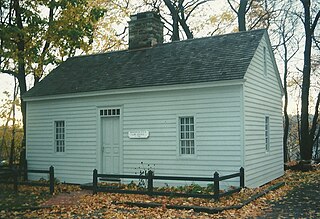
Mill Hill Historic Park in Norwalk, Connecticut is a living history museum composed of three buildings: the circa 1740 Governor Thomas Fitch IV "law office", the circa 1826 Downtown District Schoolhouse, and the 1835 Norwalk Town Hall; as well as a historic cemetery also called the Town House Hill Cemetery. The museum is also known as the Mill Hill Historical Complex in some references and the sign at the parking lot reads Norwalk Mill Hill Museum.

The Captain Nathaniel Hayden House is a historic house at 128 Hayden Station Road in Windsor, Connecticut. Built in 1763, it is a good local example of Colonial brick architecture. It was listed on the National Register of Historic Places in 1988.
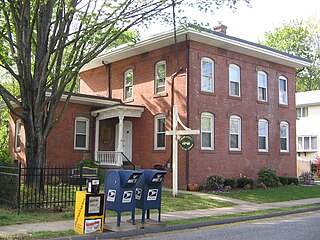
44 Court Street in Windsor, Connecticut is a well-preserved Italianate brick duplex. Built in 1876, it is one a few buildings of this type left in the town. It was listed on the National Register of Historic Places. It is currently the home of Court Street Financial Services.

The building at 14 Maple Avenue in Windsor, Connecticut is a Former Fire Station of the town. It was built about 1882, and was the town's first purpose-built firehouse. Now converted to commercial use, it was listed on the National Register of Historic Places in 1988.

The U.S. Post Office-New London Main is located at 27 Masonic Street in New London, Connecticut. Completed in 1934 as part of a Depression-era jobs program, it is one of the small number of such post offices designed by a private architectural firm, Payne & Keefe. The building was listed on the National Register of Historic Places in 1986.

The Byram School is a historic former school building, located between Sherman Avenue and Western Junior Highway in Greenwich, Connecticut. Completed in 1926, it is a well-preserved example of institutional Colonial Revival architecture, enhanced by a parklike setting. It was used as a school until 1978, and was then converted to senior housing. The building was listed on the National Register of Historic Places on August 2, 1990.

The Old Farm Schoolhouse, also known as the Brick School, is a historic schoolhouse at Park Ave. and School St. in Bloomfield, Connecticut. Built in 1795, it is the oldest surviving public building in Bloomfield. It was listed on the National Register of Historic Places in 1972.

The Bissell Tavern or Bissell's Stage House is a historic traveler's accommodation at 1022 Palisado Avenue in Windsor, Connecticut. Now a private residence, it was built in 1796, and served in the 19th century as a stagecoach stop along the main route between Springfield, Massachusetts and Hartford, Connecticut. It was listed on the National Register of Historic Places in 1985.

The Taylor Chapman House is a historic house at 407 Palisado Avenue in Windsor, Connecticut. Built in 1764, it is a well-preserved example of Georgian architecture executed in brick. It was listed on the National Register of Historic Places in 1988.

The Colonel James Loomis House is a historic house at 208-210 Broad Street in Windsor, Connecticut. Built in 1822 for a prominent local family, it is a good local example of Federal architecture executed in brick. It was listed on the National Register of Historic Places in 1988.
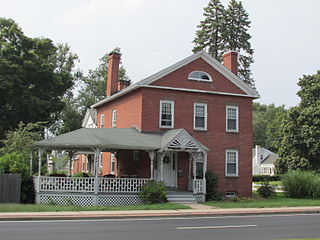
The Ira Loomis Jr. House is a historic house at 1053 Windsor Avenue in Windsor, Connecticut. Built in 1833, it is a good local example of transitional Federal-Greek Revival architecture executed in brick. It was listed on the National Register of Historic Places in 1988.

The Daniel Payne House is a historic house at 27 Park Avenue in Windsor, Connecticut. BUilt about 1830, it is a well-preserved example of a brick house with Greek Revival styling. It was listed on the National Register of Historic Places in 1988.

The Stony Hill School is a historic school building at 1195 Windsor Avenue in Windsor, Connecticut. Built in 1856 and extensively altered after a move in 1899, it is a good example of a Colonial Revival district schoolhouse built out of brick. It was listed on the National Register of Historic Places in 1988.





















